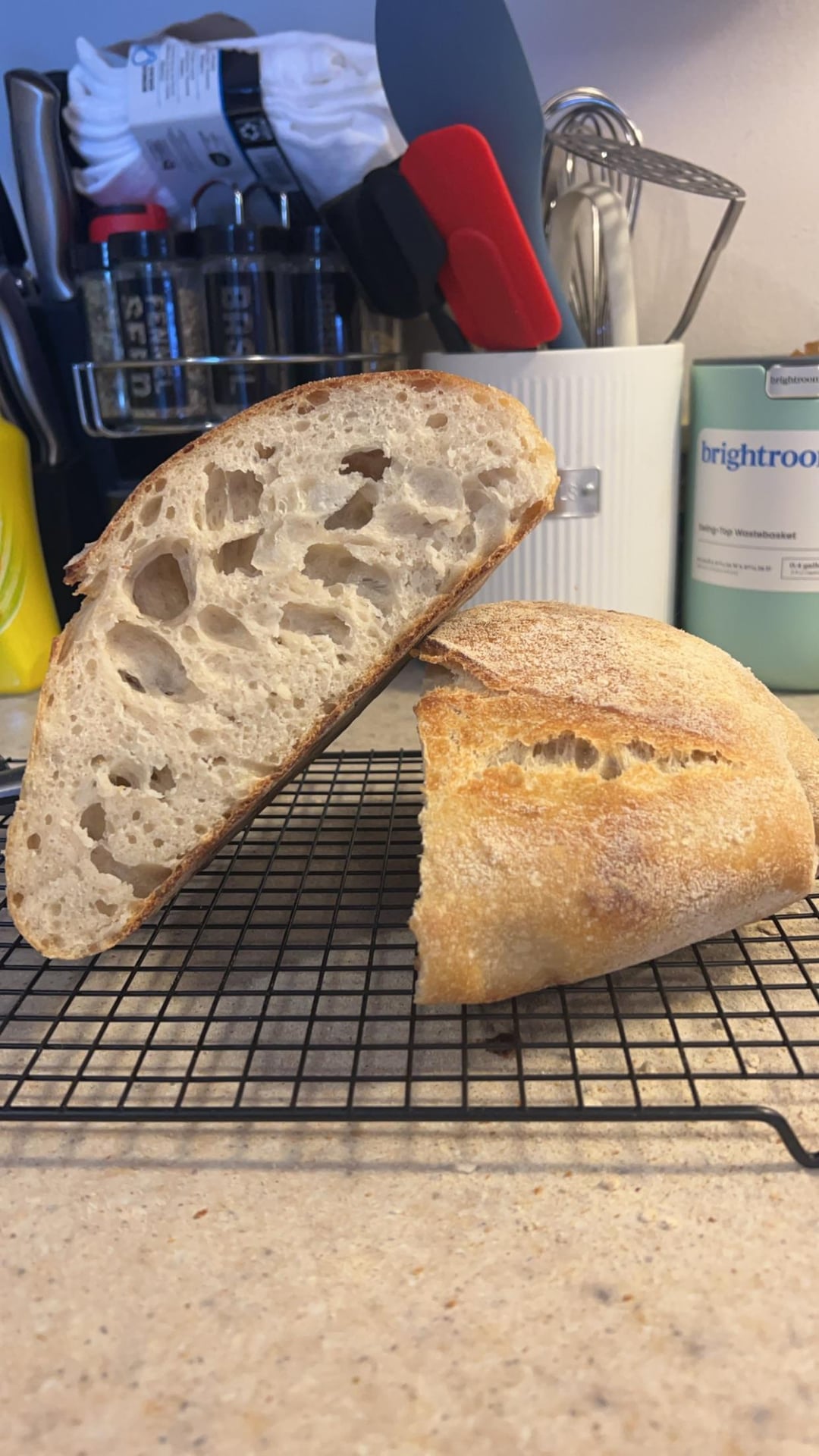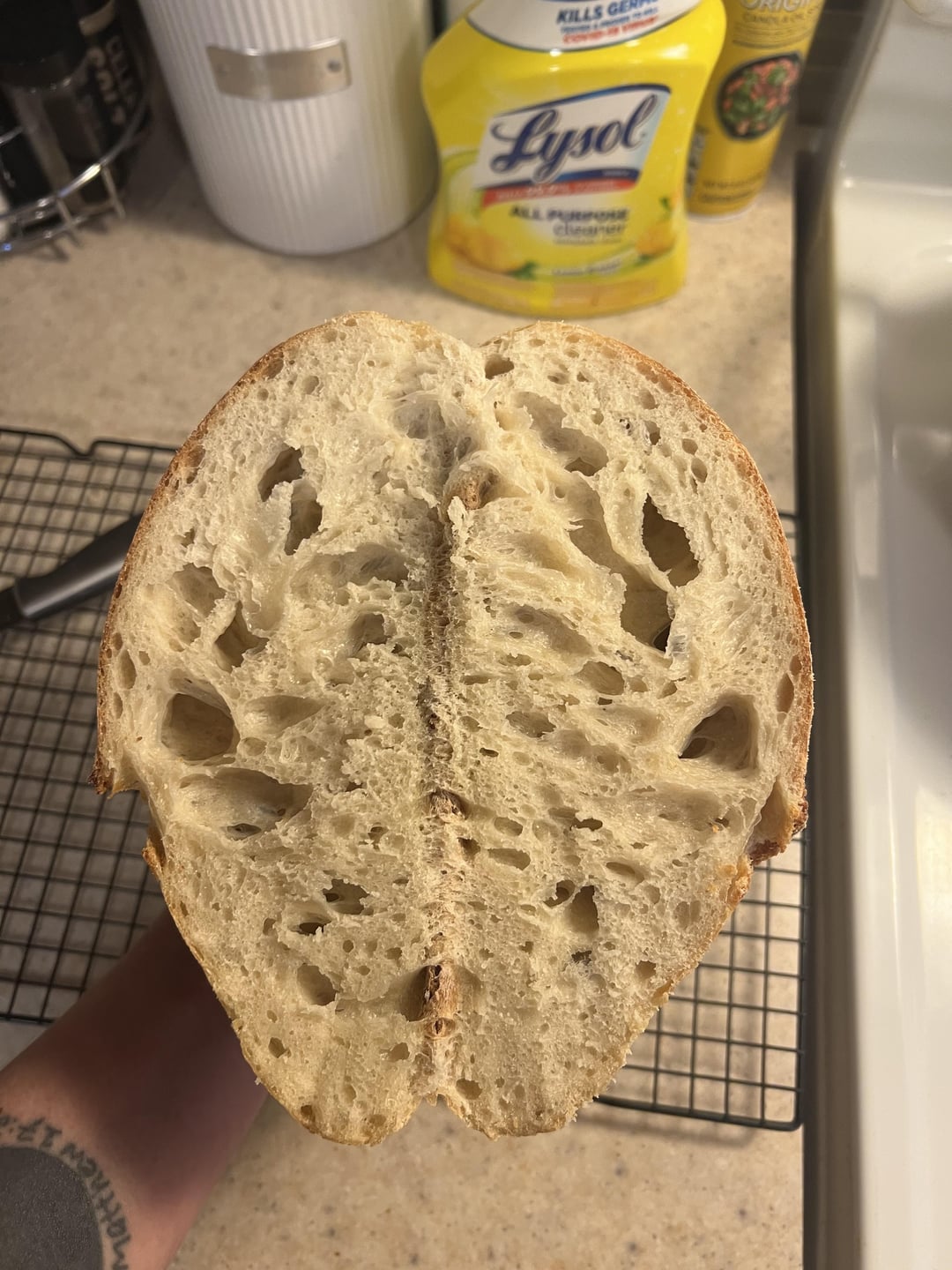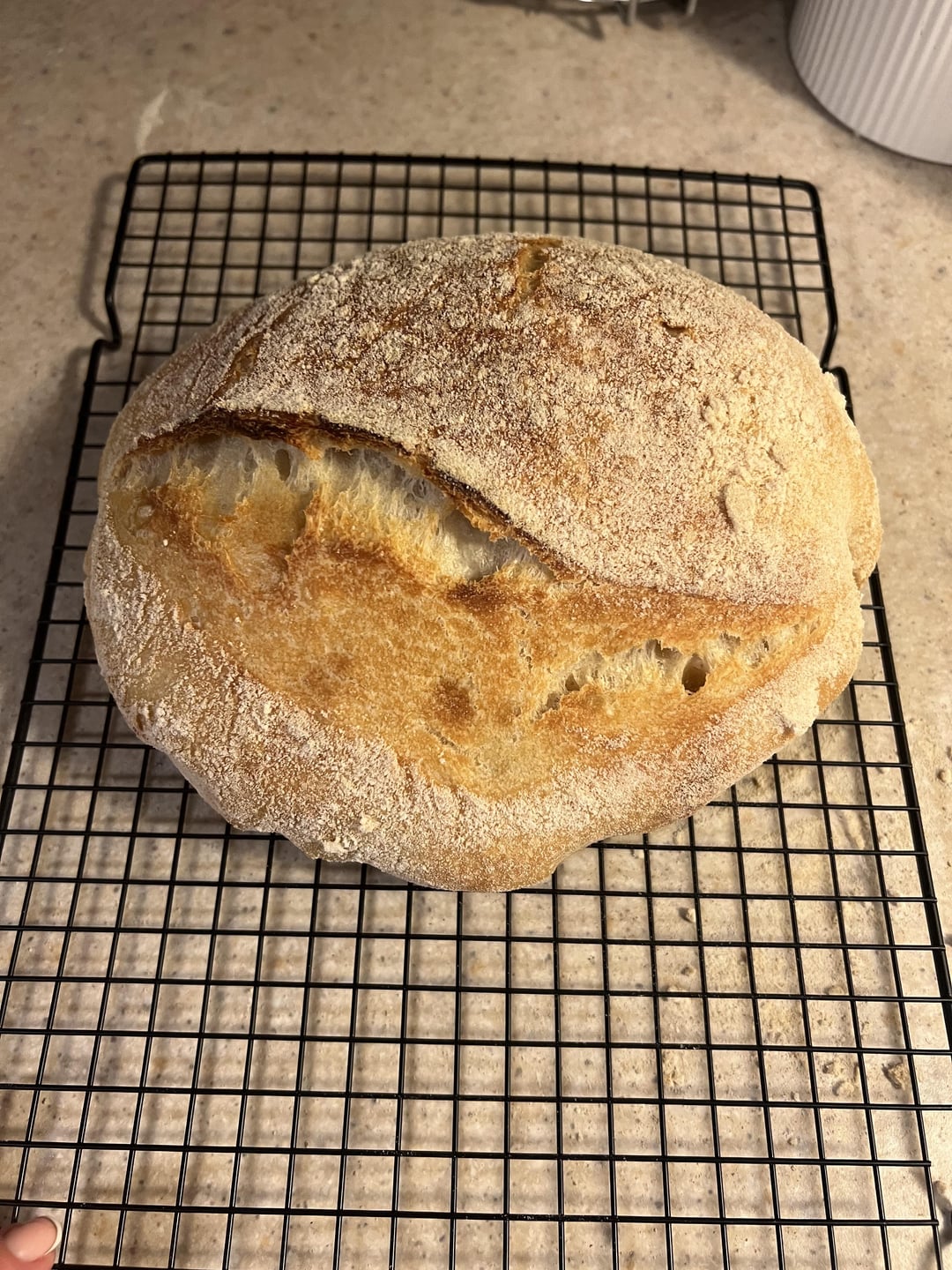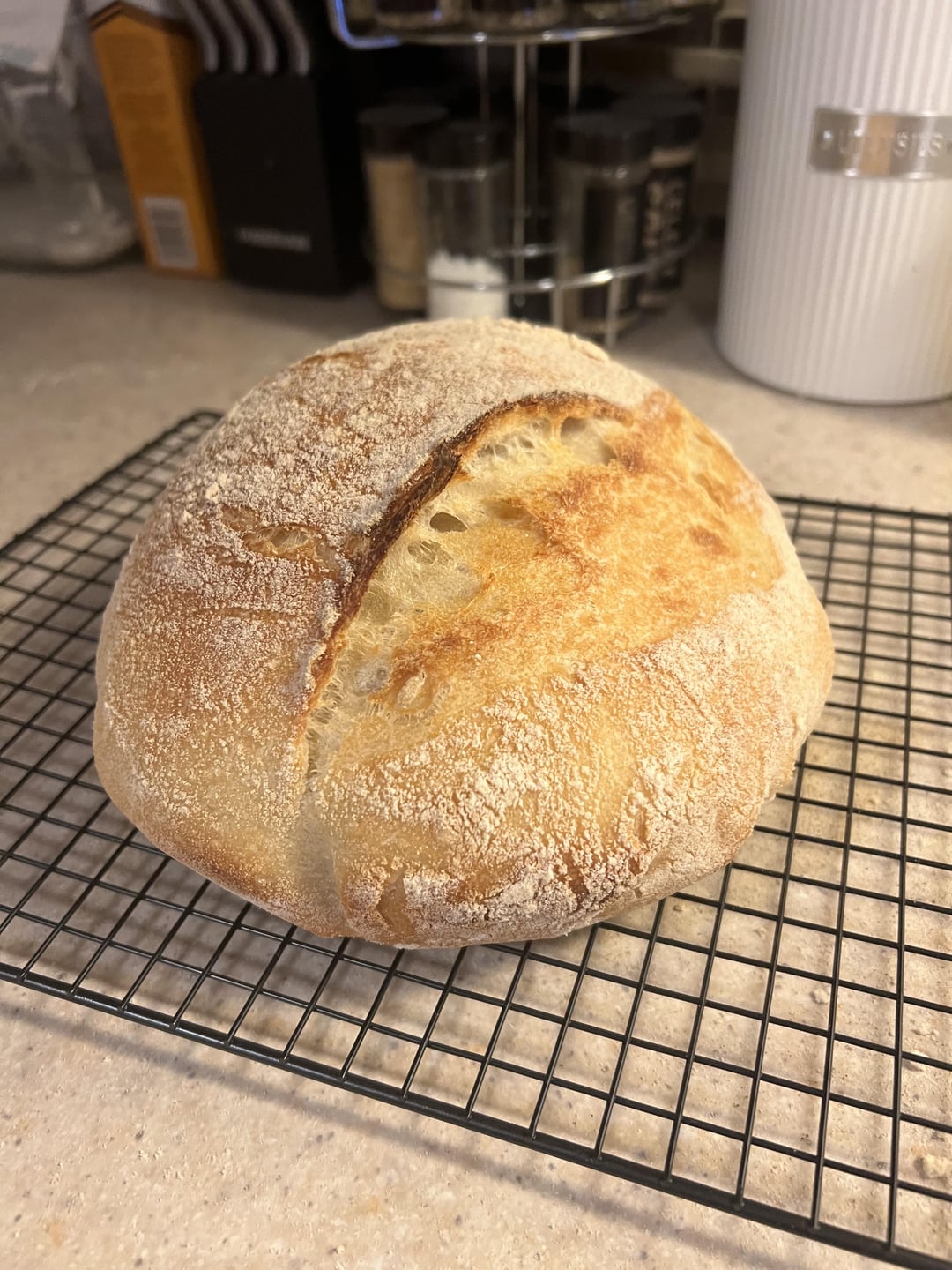



I have been struggling with understanding over, under, and just right proofing. I haven’t baked enough to have practical experience, but the concept/consistency is tricking me up. I get one confused with the other and I know someone has to have some fun way to help remind them which is which! Help appreciated!!
My starter:
1:2:2 (50:100:100)
Starter (an offspring from another starter that was created in may-ish)
Purified water
KA bread flour
For this recipe I needed to raise my starter quicker so I wrapped a heating pad with a towel around it and it doubled within a few hours!
The recipe I used for the most part is: https://alexandracooks.com/2017/10/24/artisan-sourdough-made-simple-sourdough-bread-demystified-a-beginners-guide-to-sourdough-baking/#
My timeline & what I changed up is listed as followed (I also doubled the recipe for two loaves)
– Autolyse – combined starter (200g total for quicker rise), water, flour (I don’t think it was a true autolyse bc I didn’t wait 1-2 hrs lol. And I’m not 100% sure I even did it correctly??? Ingredients wise)
– Rest 30min
– Stretch and fold (5x in 30 minute increments); added 20g salt once in the first set of stretch and folds.
– BF was about 2 hours room temp, always confused about this step and I’m not sure why
– Shape & place in floured banneton (brown rice flour)
– overnight rise on counter (9:45 pm); my house is kept really cold. Typically 65° so I figured it’d be cool enough to slow it down a bit until I woke up to bake
– score & bake (5:30 am) at the same instruction on the recipe listed but I inly preheated my Dutch oven in the oven at 450°, not 500° or whatever the recipe calls for. 450°x30 min covered then 400×20 uncovered
– transferred to cooking rack and waited about 4 hours to see the inside results!!
I’m not too mad at this!! I’m so critical of myself but I’m learning that a decent/good loaf can come out of imperfect steps.
by rylxx-


11 Comments
[deleted]
Under. What protein is your flour?
You did in fact do a fermentolyse, not an autolyse 😀 autolyse would be just flour and water
With my little knowledge (I only started baking sourdough bread last month) I would say it’s a little underfermented, because there is a bigger tunneling surrounded by dense dough. All of my loafs were underfermented until I started bulk fermenting at higher temperatures (24°C is what worked the best for me so far). Don’t give up! You just have to find a timing that works for you if you want to ferment at lower temps. Enjoy the bread nonetheless, every sourdough is yummy af
Underproofed with all that tunneling
it looks underproofed which is surprising considering it sat out a lot
OOPSIES!!
I also forgot to add that I popped it in the freezer for 30 min before scoring and baking!
It’s underfermented, as well as underbaked (there appears to be largely raw appearing parts).
With those temps, you likely shaped before the dough had risen at all. While you can do that, its better to let the bread rise first for a few reasons. First, the dough needs to have accumulated gas to be able to properly hold shape. More importantly, it’s much easier (especially for newer bakers) to evaluate whether a dough is properly fermented by letting it rise a certain amount before shaping. It’s much harder to evaluate dough that does its entire rise in a banneton. At those temps, you should probably let your dough at least double in size before shaping and doing a final proof. That might take anywhere between 12-16 hours at 65f.
Also you don’t need to turn your oven down to 400f uncovered, but if you prefer to do so you might want to leave for 35-45 minutes uncovered.
It is a lovely loaf!
You are a little under-fermented. Since you said you had to put a heating pad around the starter due to cold room temps it may need strengthening to rise the dough better. At 65°F you need 90-100% rise in your dough to call bulk fermentation complete, then shape and move into the fridge. If your temperatures are erratic, it becomes a little difficult to estimate the time, but if you go by % rise your bread will always be fully fermented.
Have a look at the FAQ and Video here for strengthening starter:
https://thesourdoughjourney.com/faq-starter-strengthening/
I also make bread in lower than average temperatures. At 65°F my starter will rise normally. Once I am below that (like now when kitchen is 61-62°F) I have to use warm water in the dough and put it in the microwave with the light on (or in-out of oven with light on) to keep the dough temperature up.
With the increased starter amount and 65°F you should have gotten full rise overnight. So that is why I think the starter may need strengthening. But if your overnight temp was actually lower than that you are probably fine and it is just temp related slower activity.
Under as others have stated, cold temps and possibly underdeveloped starter.
Autolyse is a method of letting flour better hydrate and make a more extensible dough, typically you don’t want any fermentation to occur so it should just be flour and water. After 1-2 hours then mix in starter, salt and some reserved water (10g or so) to help salt mix.
Proofing time or bulk fermentation starts when you add your starter to your flour and water mixture. Usually this happens all at once. Stretch and folds happen during bulk fermentation.
In order to master the bulk fermentation you must understand dough temperature. Your dough temperature determines how fast your dough proofs. If your loaf is 65 degrees it might take 12 hours. If your loaf is 80 degrees it will take roughly around 5.
Your loaf is underproofed. I recommend getting a probe thermometer and checking the temp of your dough periodically to see how warm or cold it is. Keep in mind room temp does NOT equal dough temp.
I bulk ferment at 75 degrees. It takes about 7 hours from the time I add my starter to my mixture. I stretch and folds the first few hours and let it sit until fully proofed.
Good luck.
Gonna need more proof, pictures could be fake.